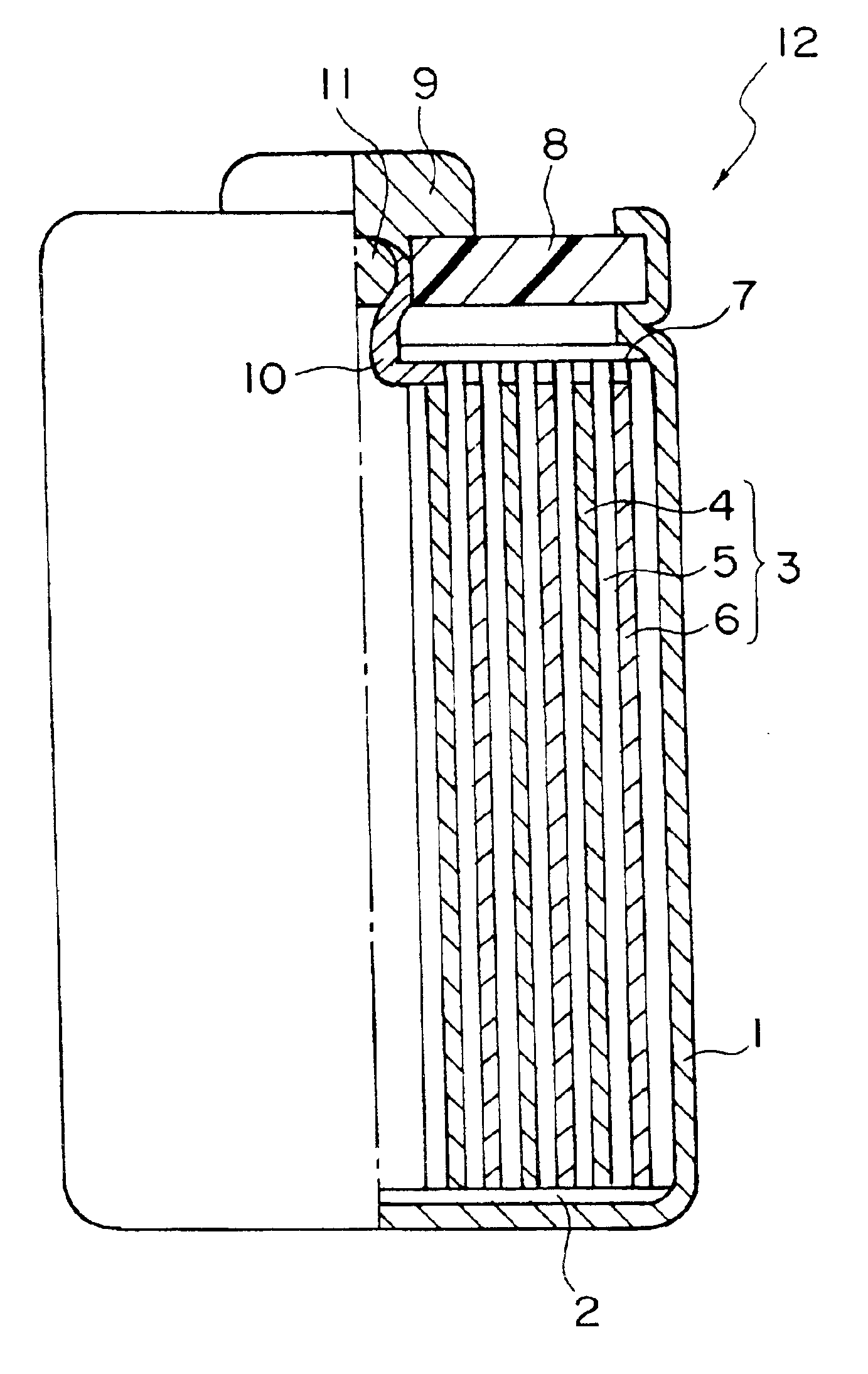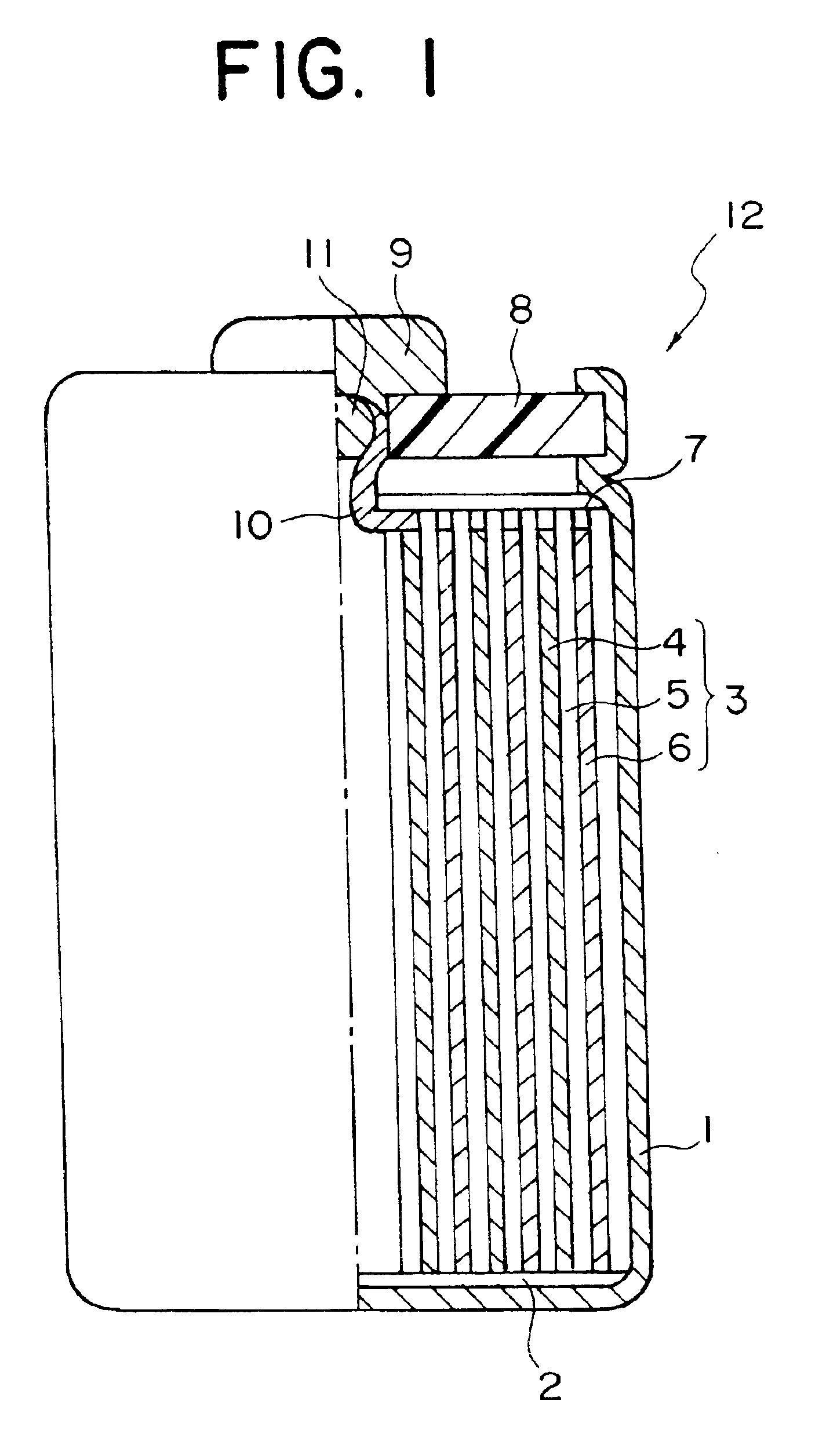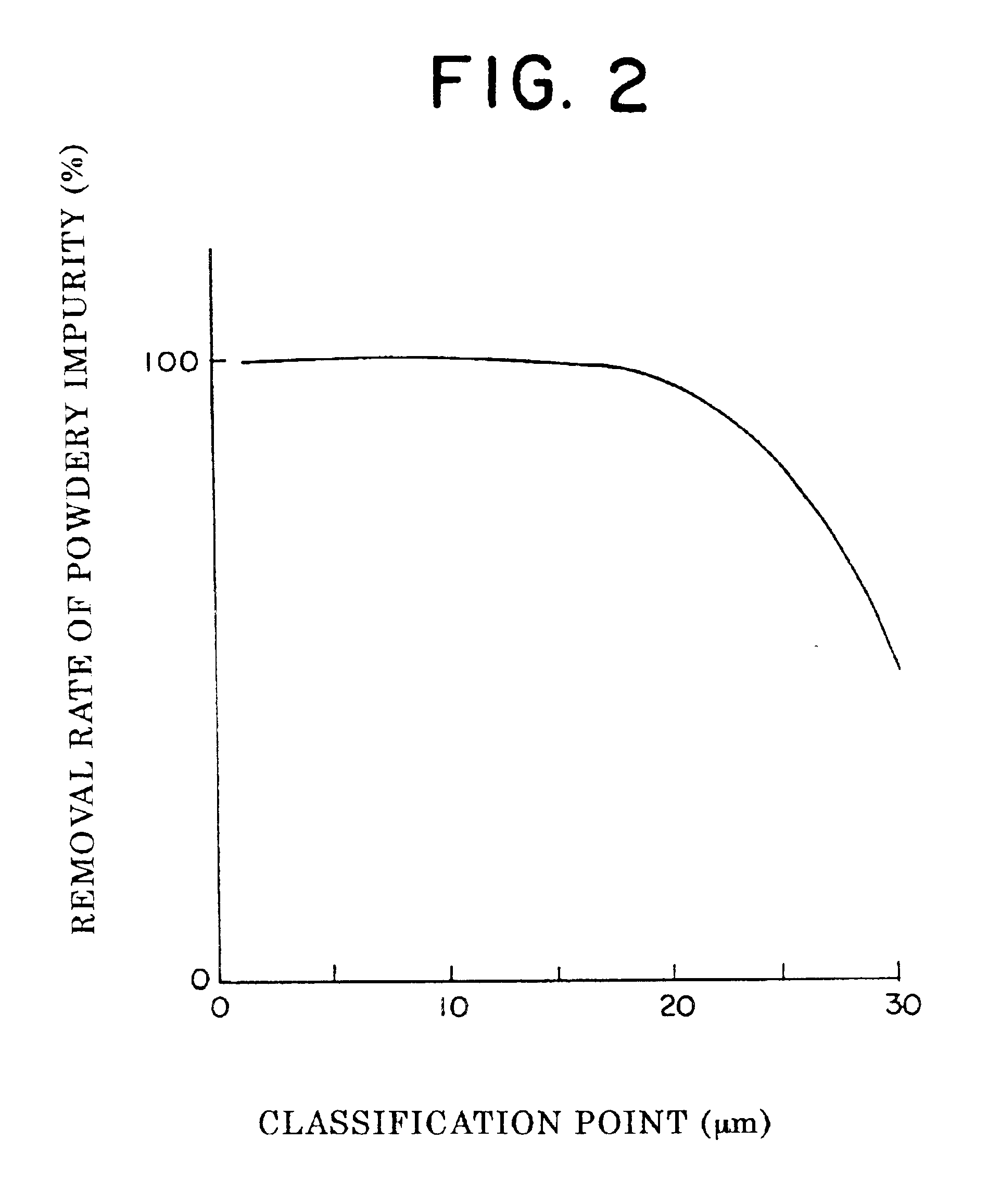Active material for anode of secondary cell and method for production thereof and non-aqueous electrolyte secondary cell, and recycled electronic functional material and method for recycling electronic functional material
a technology of active materials and secondary cells, which is applied in the field of active materials for secondary cells and methods for production thereof, and non-aqueous electrolyte secondary cells, and recycled electronic functional materials and methods for recycling electronic functional materials. it can solve the problems of deterioration of battery performance, decrease in manufacturing yield, and decrease in manufacturing yield
- Summary
- Abstract
- Description
- Claims
- Application Information
AI Technical Summary
Benefits of technology
Problems solved by technology
Method used
Image
Examples
embodiment 1
In Embodiment 1, a manufacturing method of the positive electrode active material of the present invention will be explained.
First, cobalt oxide powder and lithium carbonate and tin oxide are mixed with a predetermined ratio, followed by sintering in air at a temperature of 900.degree. C. for 5 hr, thereby Sn containing LiCoO.sub.2 powder as the positive electrode active material is obtained. The average particle size (D(50)) of the obtained Sn containing LiCoO.sub.2 powder is 3.71 .mu.m.
The positive electrode active material powder is classified by use of an air classifier, and the coarser particles and the higher density particles, furthermore the finer particles and the lower density particles are removed. By appropriately selecting the volume of air, dispersion conditions, and the number of rotor revolution, the classifier is operated. A yield ratio is 2% for the coarser particle side, 0.5% for the finer particle side, and 97.5% for the positive electrode active material after t...
embodiment 2
In the similar ways as Embodiment 1, the positive electrode active material (Sn containing LiCoO.sub.2 powder) is A prepared. At this time, by changing the classification conditions, 12 kinds of specimens, which are different in the conditions for removing the coarser particles and the higher density particles, are obtained. From each of the specimens, a sample for analysis is sampled, and amounts of the impurities are measured in the following ways. Furthermore, with each of the specimens, in the similar ways as Embodiment 1, a lithium ion secondary battery is manufactured, and the voltage drop under the same conditions as Embodiment 1 is measured. These results are shown in Table 3.
The measurements of the amounts of the impurities are implemented by first dissolving under heating part of the individual samples with aqua regia, and followed by measuring Fe content, Zn content, and Cu content in a liquid where the sample is completely dissolved, by means of ICP analysis. The analysi...
embodiment 3
First, lithium carbonate and cobalt oxide (Co.sub.3 O.sub.4) are mixed so that an atomic ratio of Li:Co may be 1:1, followed by sintering in air at a temperature of 900.degree. C. for 5 hr, thereby LiCoO.sub.2, the positive electrode active material, is synthesized. Then, the obtained LiCoO.sub.2 is milled by means of a pulverizer to an average particle size of substantial 5 .mu.m. The LiCoO.sub.2 powder aftermilling is classified by means of the dry centrifugal classifier, thereby the powdery metallic impurities (higher density particles) are separated / removed from the LiCoO.sub.2 powder.
The LiCoO.sub.2 powder, which is threw into the centrifugal classifier from a raw material input port, rides on an air stream and is sufficiently dispersed in an attached dispersion area, and thereafter, is sent into a classification area. The LiCoO.sub.2 powder is subjected to centrifugal force due to a rotary flow of a classifier rotor and resistance force of airflow, which flows from a tangentia...
PUM
| Property | Measurement | Unit |
|---|---|---|
| temperature | aaaaa | aaaaa |
| density | aaaaa | aaaaa |
| particle diameter | aaaaa | aaaaa |
Abstract
Description
Claims
Application Information
 Login to View More
Login to View More - R&D
- Intellectual Property
- Life Sciences
- Materials
- Tech Scout
- Unparalleled Data Quality
- Higher Quality Content
- 60% Fewer Hallucinations
Browse by: Latest US Patents, China's latest patents, Technical Efficacy Thesaurus, Application Domain, Technology Topic, Popular Technical Reports.
© 2025 PatSnap. All rights reserved.Legal|Privacy policy|Modern Slavery Act Transparency Statement|Sitemap|About US| Contact US: help@patsnap.com



